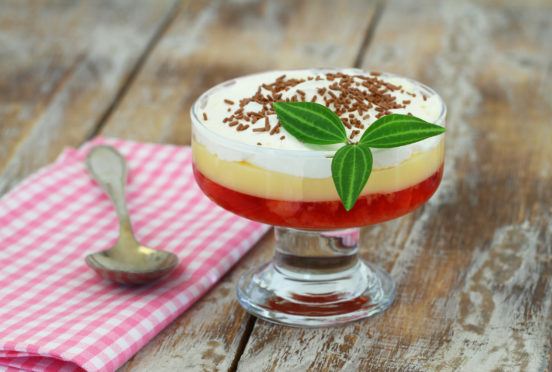It may be the centre piece on the table when it comes to festive puddings, but the trifle is so much more than just a Christmas treat.
When you think of trifle, the first thing that probably comes to mind is Christmas.
We all have fond memories of devouring bowlfuls of the stuff even after filling our bellies with course after course on Christmas Day.
But while the dish may be closely associated with British festive celebrations, it’s important to remember that it is just as easy to enjoy throughout the whole year.
Made with fruit, a thick layer of sponge fingers soaked in sherry, custard and whipped cream on top, this indulgent dessert is an excellent addition to any dining room table, especially for those who love entertaining.
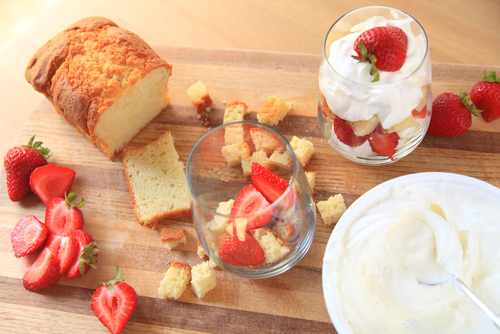
While some have reinvented the classic dish replacing elements of it with chocolate, vanilla, coffee, banana and more, the boozy dessert usually features sherry, however other fortified wines, port and Madeira wine are also commonly used. For non-alcoholic versions, sweet juices or ginger ale can easily be swapped in.
It was during the Victoria era when the trifle became increasingly popular. Like many puddings during this time, it was usually made up of leftovers and trifle was a great way to use up stale or leftover cake.
Around 50 years ago in the 1970s the successful high-calorie dessert became a restaurant cliche, and received a bit of a retro makeover with the addition of hundreds and thousands and synthetic cream. Many of us will remember this style of trifle being served up during our childhood.
Fast forward to 2020 and the trifle is still a much-loved dish, albeit slightly more occasional. While its flavours and toppings may have changed over the decades, one rule of thumb that has not changed is that a trifle must be served in a glass dish/bowl to ensure everyone can see the beautiful layering. To this day, many people still serve it this way, showing off their handiwork.
Individual Trifle
(Serves 6-8 depending on portion size)
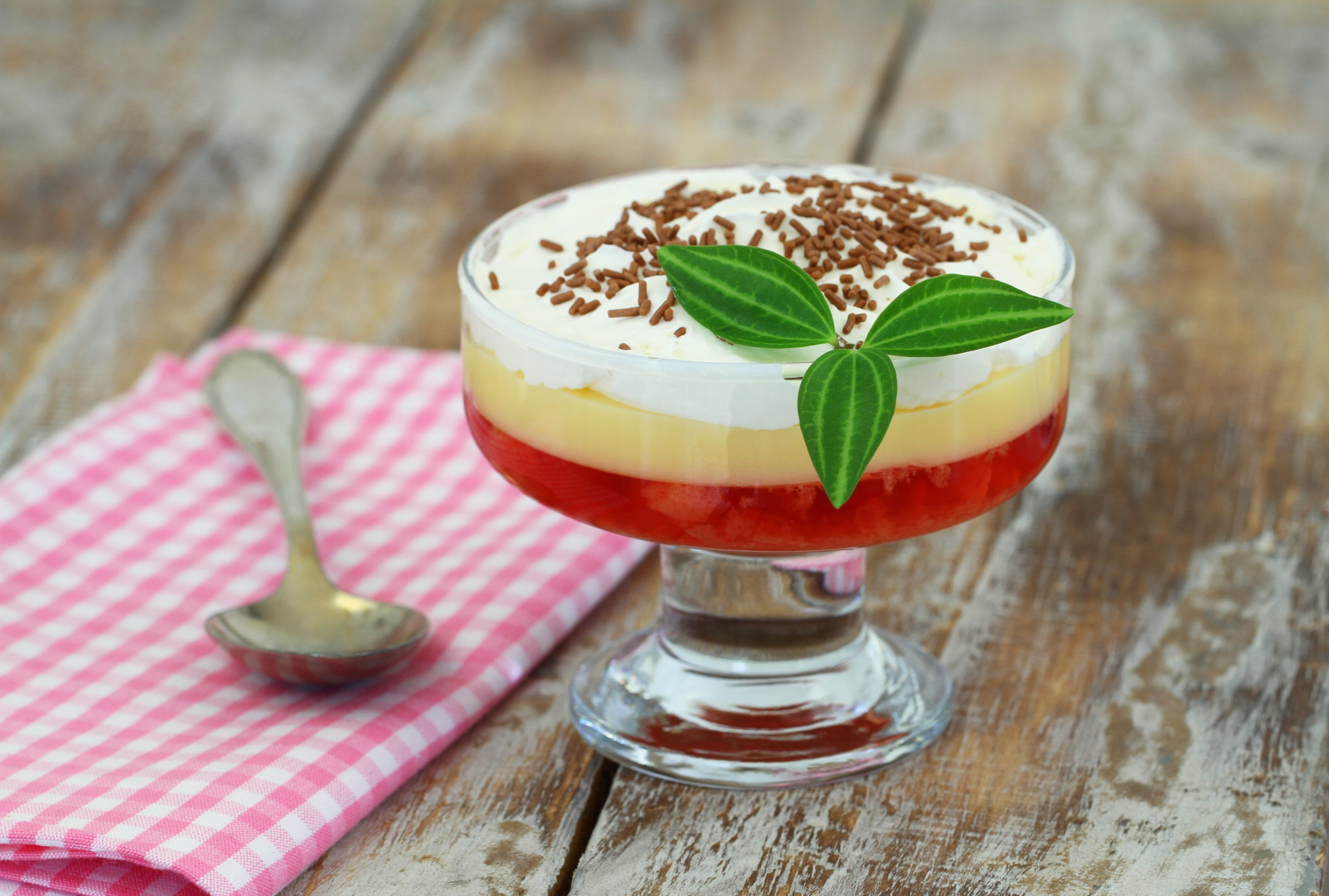
Ingredients
- 170g sponge cake (halved and cut into thick slices)
- 70ml sweet sherry
- 500ml double cream (whipped to a thick consistency)
- 135g jelly (follow packet instructions to make)
- 500g thick custard (ready-made or you can also make your own at home)
- 300g fresh strawberries or raspberries
- Optional to garnish: fresh fruit or chocolate curls
Method
- Line the bottom of your bowl with the sponge cake slices and pour the sherry over them all. Leave them to soak for 10-15 minutes.
- Cut the strawberries into thick slices and place them on top of the sponge. Be sure to press them down into the sponge to release some of the juice from the fruit – this will add to the overall flavour.
- Make the jelly (follow the packet instructions).
- Once the jelly is made, pour it into the bowl so the liquid sits over the fruit and on top of the sponge.
- Put the bowl in the fridge and leave until the jelly has set.
- Remove the bowl from the fridge once set and spoon the custard on top, making sure to create a thick layer.
- Add a later of thick whipped cream to finish it off.
- Top off with some fresh fruit or chocolate curls to finish.
Recipes with a twist
Why not replace the fruit with banana and add caramel into your custard to make a banoffee version?
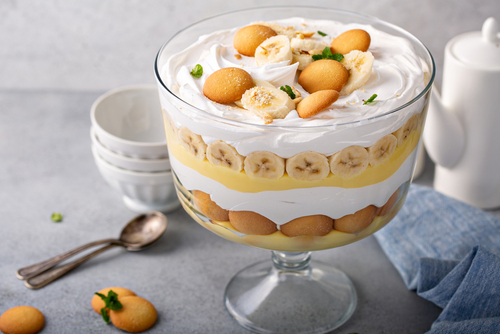
Or make a twist on the tiramisu by adding coffee and chocolate into the mix.
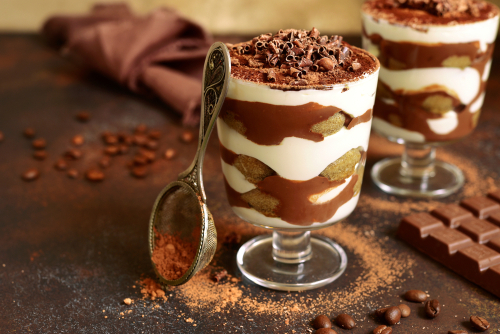
Instead of using sponge fingers, you can also try using a Swiss roll for some extra jam indulgence.
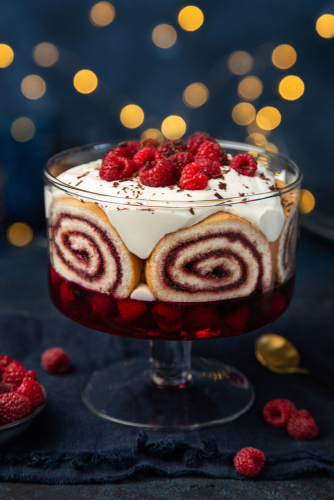
Or swap in summer fruits for dark forest fruits for a more decadent look.
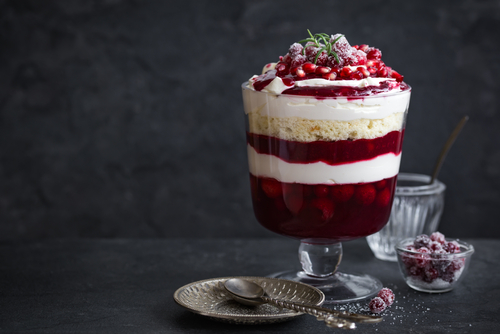
Read more in this series…
Throwback Thursday: Steak Diane – the popular 50s dish named after a Roman Goddess
Throwback Thursday: Baked Alaska, the flambe dessert that dominated the 50s
